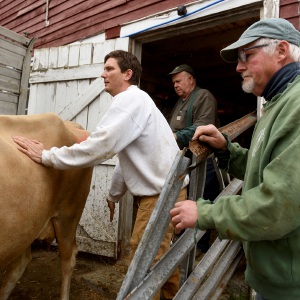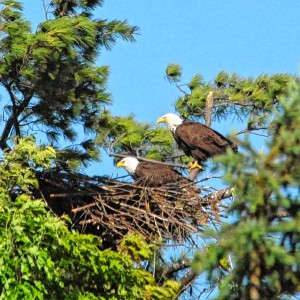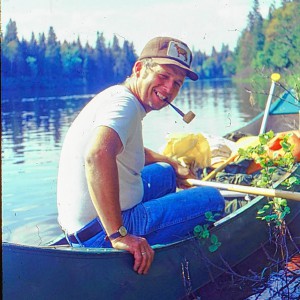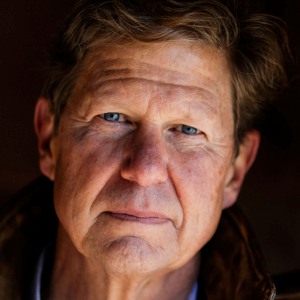Column: Act 250 update would preserve Vermont landscape
| Published: 04-05-2024 9:56 AM |
Act 250, Vermont’s visionary development statute, is over 50 years old. It is often credited as one of the primary reasons that our landscape looks the way it does. The law has been changed here and there over the years but is long overdue for a more substantial update to meet changing times.
H.687, An Act Relating to Community Resilience and Biodiversity Protection Through Land Use, was passed by the House last week and would make several needed changes. H.687 is a big bill, but the overriding consequence is that it will tighten oversight of development in places where most of us agree we would rather not see more building, such as in the middle of blocks of intact forest, and loosen oversight in places where we mostly agree that more development is desirable, such as existing downtowns and the built environments that surround them. This revision is urgent now because development pressures have increased remarkably in recent years.
The bill would create three categories, called Tiers, of land area in the state. Tier 1 would consist of developed areas. These are places that include downtowns, village centers, and our more densely populated residential neighborhoods. These are the areas where it would become easier to build. Tier 3 would consist of areas that “may include river corridors, headwaters streams, habitat connectors of Statewide significance,” and other areas that contain critical natural resources that will be identified through a public process. These areas would include places, such as those comprising very steep slopes, for which there is broad agreement that development should be subject to increased review. H.687 would make it harder to build in these places.
Tier 2 is the rest of the state, consisting of our farms, forests, and residential rural areas. The main change to the status quo in this Tier would concern the building of long roads and would apply when “the length of any single road is greater than 800 feet, and the length all roads and any associated driveways in combination is greater than 2,000 feet.” Crucially, this provision would not mean that such roads could not be built, but that they would be subject to review under Act 250, and it would not apply at all to farm or logging roads.
The forests of Vermont are a great treasure. They provide habitat for a multitude of species, timber for many uses and beautiful spaces for us to hike, hunt and appreciate the natural world. They are also disappearing. The US Forest Service reports that Vermont’s forests are being converted to non-forest use at the rate of over 12,000 acres a year. And this number greatly understates the damage inflicted on our forest ecosystems, as it doesn’t address the ongoing fragmentation of our forests due to the building of new roads, among other factors. While H.687 won’t come anywhere close to stopping the destruction of our forests, it will certainly help slow down this process.
The overwhelming majority of projects that submit Act 250 applications are approved quickly, and Act 250 covers only a small percentage of development statewide. That will not change. Widespread development will still take place. We often hear criticism about Act 250 from developers but seldom hear about what that law has accomplished for us. We don’t notice the bad development that never happened. Of course we don’t. It’s not there. It’s intangible, but nevertheless Vermonters have benefited greatly from this law.
A common refrain from Vermonters is that we love the fields, farms and forests that surround our cities, towns and villages. But this cherished landscape is going away. We are blotting it out bit by bit, and once those bits are gone, we can’t get them back. If we allow current trends to continue, Vermont will be a very different place for our children and grandchildren. H.687 is an important and meaningful step in the right direction.
Rep. Larry Satcowitz, D-Randolph, serves on the House Environment and Energy Committee.
Article continues after...
Yesterday's Most Read Articles
 Herd departs Hartford’s last remaining dairy farm
Herd departs Hartford’s last remaining dairy farm
 Bald eagles are back, but great blue herons paid the price
Bald eagles are back, but great blue herons paid the price
 At Dartmouth, hundreds protest ongoing war in Gaza and express support for academic freedom
At Dartmouth, hundreds protest ongoing war in Gaza and express support for academic freedom
 Kenyon: What makes Dartmouth different?
Kenyon: What makes Dartmouth different?
 A Life: Richard Fabrizio ‘was not getting rich but was doing something that made him happy’
A Life: Richard Fabrizio ‘was not getting rich but was doing something that made him happy’

 Editorial: Chris Sununu’s moral vacuum
Editorial: Chris Sununu’s moral vacuum Editorial: Gambling tarnishes America’s sporting life
Editorial: Gambling tarnishes America’s sporting life By the Way: A white nationalist’s many mistruths
By the Way: A white nationalist’s many mistruths Column: The age-old question of what to read
Column: The age-old question of what to read
